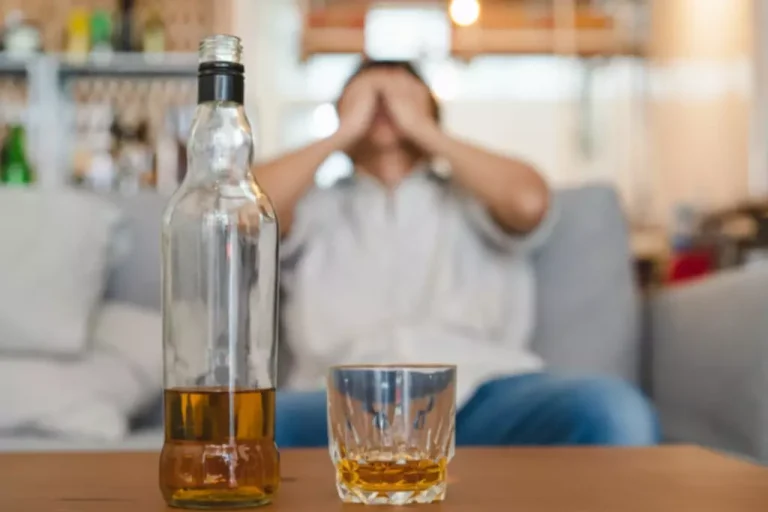
This type of therapy can help you challenge and reframe unhelpful beliefs and behaviors and replace them with more productive ones. Though therapy generally can’t address withdrawal symptoms specifically, it can help improve some symptoms, like anxiety and insomnia. A therapist or other mental https://ecosoberhouse.com/ health professional can offer support with navigating these effects and helping improve your overall quality of life during the withdrawal period. In addition, over half of the survey respondents said benzodiazepines’ side effects or withdrawal symptoms caused them to consider suicide.
Protracted withdrawal
- When used appropriately they are very effective in treating these disorders.
- Exercise and physical therapy can mitigate pain, while talk therapy, and in particular cognitive behavioral therapy (CBT), addresses anxiety.
- For example, doctors may recommend flumazenil (Romazicon) to help with severe withdrawal symptoms and other drugs, such as buspirone (BuSpar), to help people with severe anxiety symptoms.
- Often the help of a clinical psychologist, trained counsellor, or other therapist is valuable, especially for teaching relaxation techniques, deep breathing, how to deal with a panic attack etc.
- During the first week, you can also expect physical symptoms like headaches and hand tremors.
An estimated 50-80% of people who have taken benzodiazepines continually for a few weeks or longer will experience withdrawal symptoms when reducing the dose; a smaller percentage will experience severe withdrawal. People taking benzodiazepines regularly long term (longer than 2 to 4 weeks) may have symptoms of withdrawal even when they have not reduced the dose. These withdrawal symptoms can be attributed to tolerance or interdose withdrawal. It is common that patients experiencing symptoms do not recognize that their poor physical and mental health is related to their long-term use of the benzodiazepines.

Management of mild opioid withdrawal
Typically, this is a combination of therapy and pharmacologic support. Some people, such as those with a history of complicated withdrawal, seizures, or severe mental illness, may be better suited for an inpatient setting. This can involve living at a detox facility or hospital for several weeks, where you can receive constant medical monitoring and psychological support. Risk factors for developing a Xanax dependency are as varied as the individuals who fall prey to it. A history of substance abuse, trauma, or mental health issues can increase your vulnerability.
Xanax Addiction Withdrawal: Symptoms, Timeline, and Recovery Process

This potent benzodiazepine, prescribed to millions for anxiety and panic disorders, has become a double-edged sword in the realm of mental health treatment. While it offers quick relief from debilitating symptoms, its potential for dependency and the subsequent withdrawal process can be nothing short of harrowing. Patients undergoing alcohol withdrawal may have numerous potentially life-threatening medical problems.
The Insidious Nature of Xanax Addiction
Even by halving these tablets the smallest reduction one could easily make is the equivalent of 2.5mg diazepam. (Some patients become very adept at shaving small portions off their tablets). Because of limited dose formulations, it may be necessary to switch to diazepam even if you are on a fairly long-acting benzodiazepine of relatively low potency (e.g. flurazepam [Dalmane]).
- Regular use of BZDs can lead to tolerance, which is the physiologic dependence on the presence of BZDs in the body’s system.
- The subjects were interviewed with surgery-based consultations for approximately 10 min [12].
- Certain factors play a role in the severity of withdrawal symptoms, such as dosage, duration of action of the BZD duration of treatment with the drug, and severity of psychiatric symptoms pre-treatment.
- By Corinne O’Keefe OsbornCorinne Osborn is an award-winning health and wellness journalist with a background in substance abuse, sexual health, and psychology.
4. WITHDRAWAL MANAGEMENT FOR BENZODIAZEPINE DEPENDENCE
Studies have shown that treatment for longer periods with high-dosage, short-acting BZD contribute to more severe withdrawal effects [61]. Milder effects are seen with longer-acting BZD that are used for shorter periods [61]. Those who have never experienced withdrawal symptoms from BZD discontinuation benzodiazepine withdrawal could quit using BZD more easily [62]. Baseline anxiety is an important indicator of withdrawal symptoms [63]. People with severe anxiety before starting treatment with BZD typically have more severe withdrawal symptoms, and thus have a harder time fully discontinuing the drug [63].
If you want to stop taking benzodiazepines after consistent long-term use, your doctor can help you gradually taper off your medication. Tapering can help take the edge off withdrawal symptoms like tremors and nausea, though it may not prevent withdrawal symptoms entirely. There is a risk that people who quit benzodiazepines without a taper may experience a life-threatening grand mal seizure. If you go into withdrawal without tapering, you also risk experiencing delirium and hallucinations that cause you to lose touch with reality—a terrifying and dangerous experience.
The schedule may include the use of liquid preparations if available and judicious stepwise substitution with diazepam (Valium) if necessary. There is, of course, a great deal of variation in the age at which individuals become “older” – perhaps years would fit the definition in most cases. At the start of my Benzodiazepine Withdrawal Clinic in 1982, no-one had much experience in benzodiazepine withdrawal.

The difference in these characteristics dictates the clinical applicability of the drugs. Oxazepam, temazepam, and chlordiazepoxide which are low potency benzodiazepines are well tolerated with low toxicity levels. Alprazolam, lorazepam and clonazepam are high potently clinically used to treat panic disorders and serve as adjuncts for treating many other diseases [1]. Due to their toxic effect on the central nervous system, appropriate care is necessary with BZD. BZDs lead to long-lasting impairment of episodic implicit memory while it only impairs implicit memory transiently [1].
- This is particularly true if you are also giving up other substances, like alcohol or opioids.
- Give 20mg diazepam by mouth every 1-2 hours until symptoms are controlled and AWS score is less than 5.
- Symptoms begin within 24 hours of last use of stimulants and last for 3-5 days.
- The 2022 survey mentioned above also asked respondents to what extent withdrawal symptoms affected their lives.
- A slow taper would involve reducing your dose by 1 mg (5%) every 4 weeks.
History and Physical
Your doctor will help make an individualized tapering schedule based on your current dose and particular circumstances. Estimates suggest that 10 to 25% of people who take benzodiazepines for extended periods experience what’s known as protracted withdrawal. Withdrawing from benzodiazepines can be a difficult, even dangerous process. During the first week, you can also expect physical symptoms like headaches and hand tremors.
